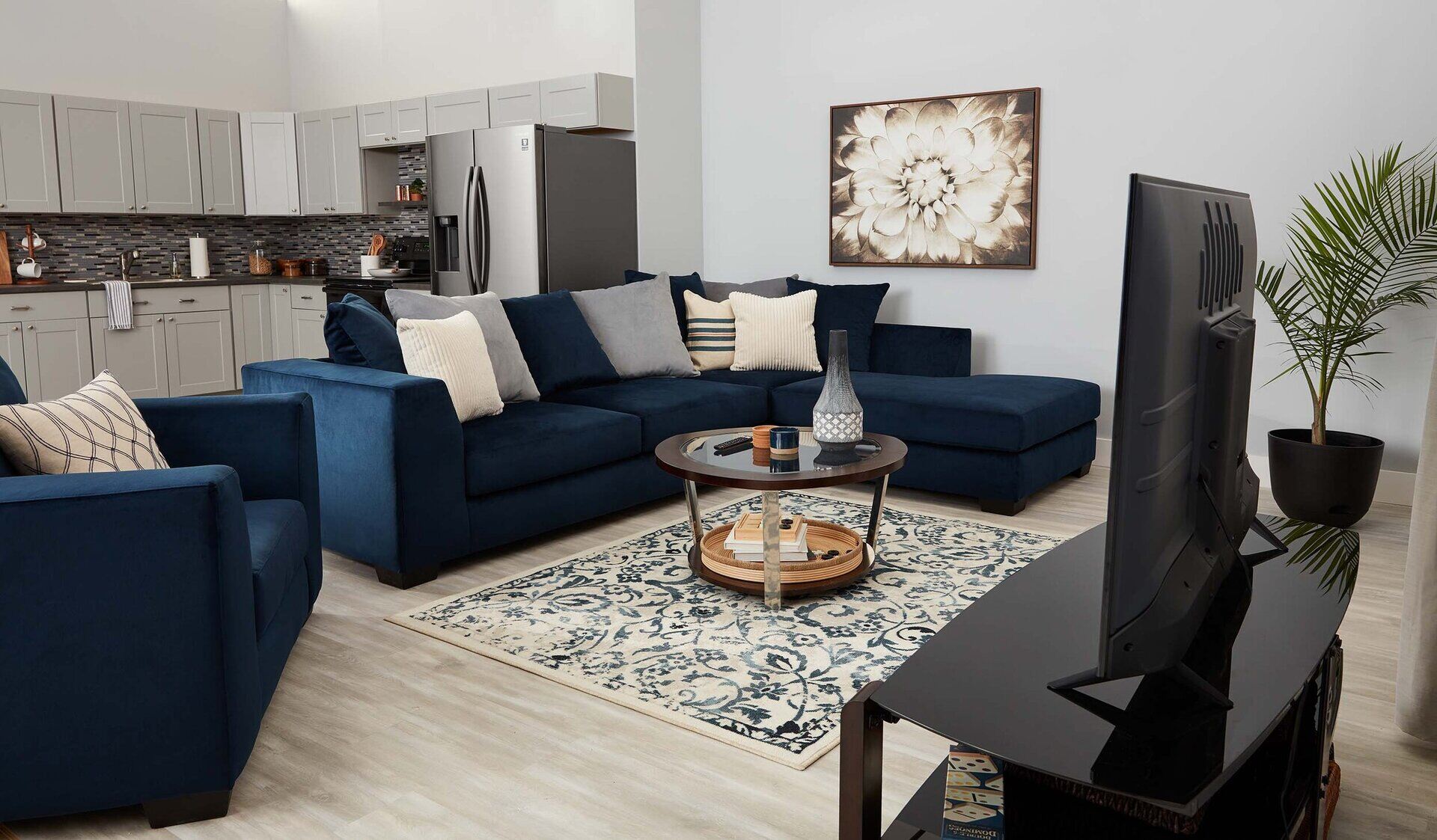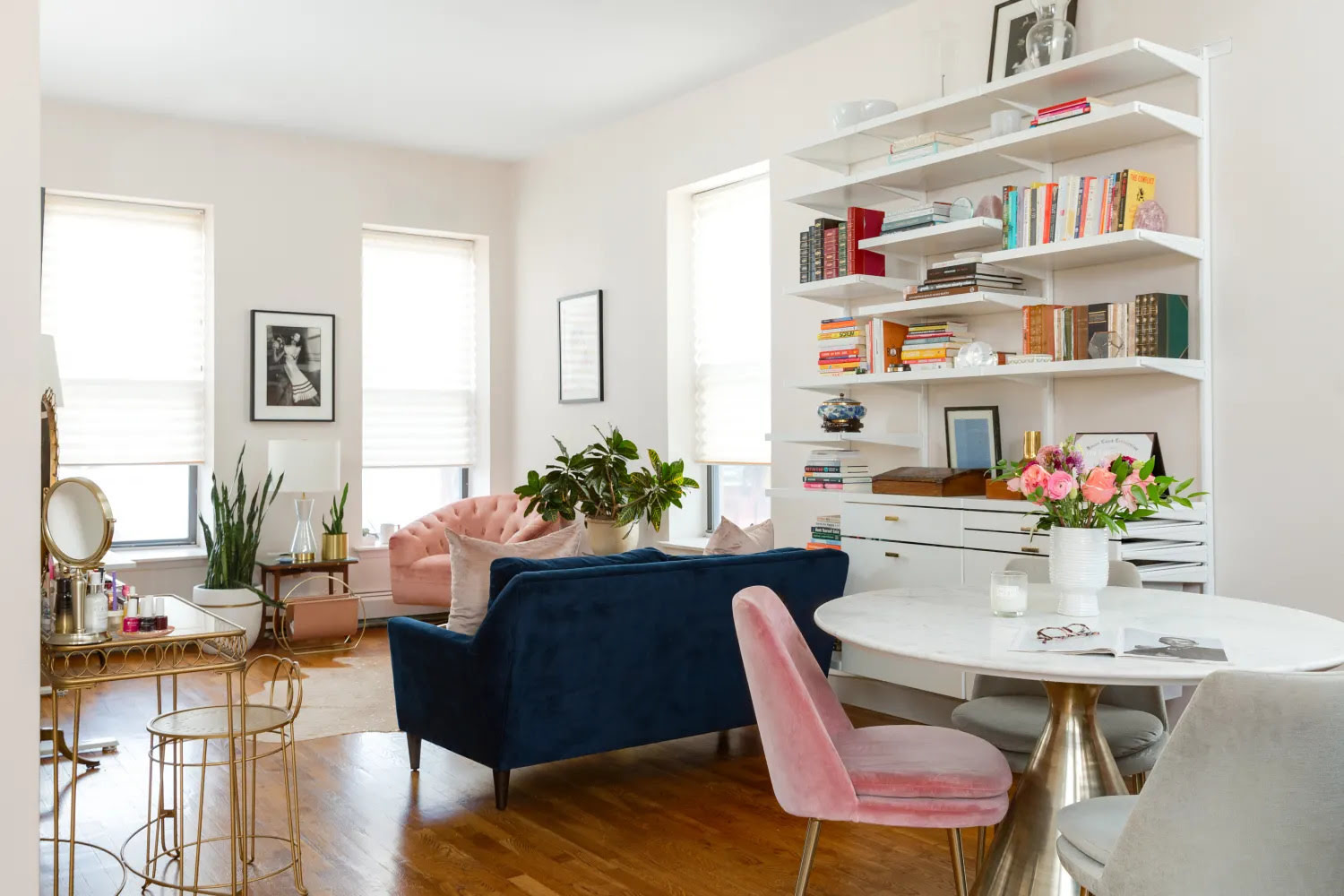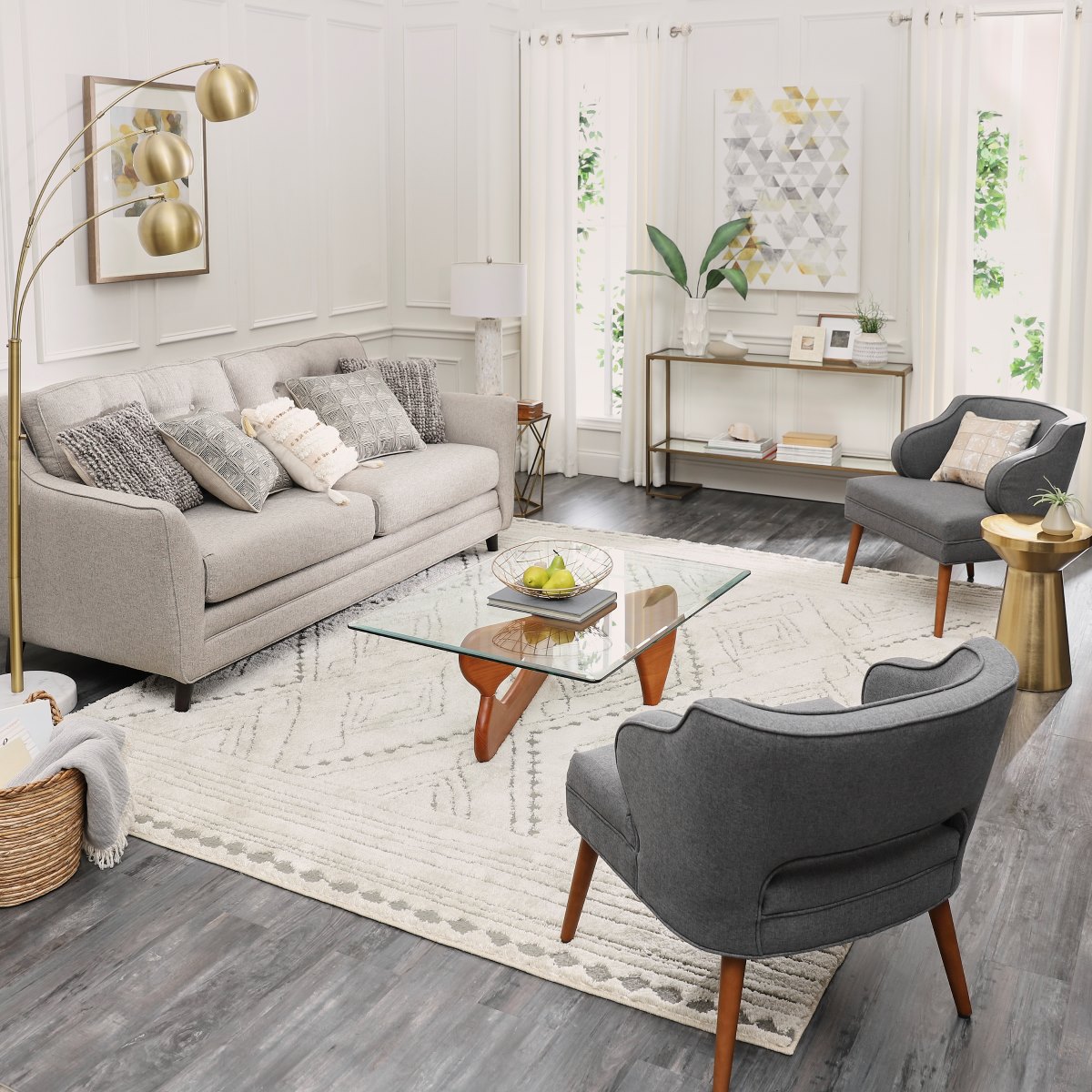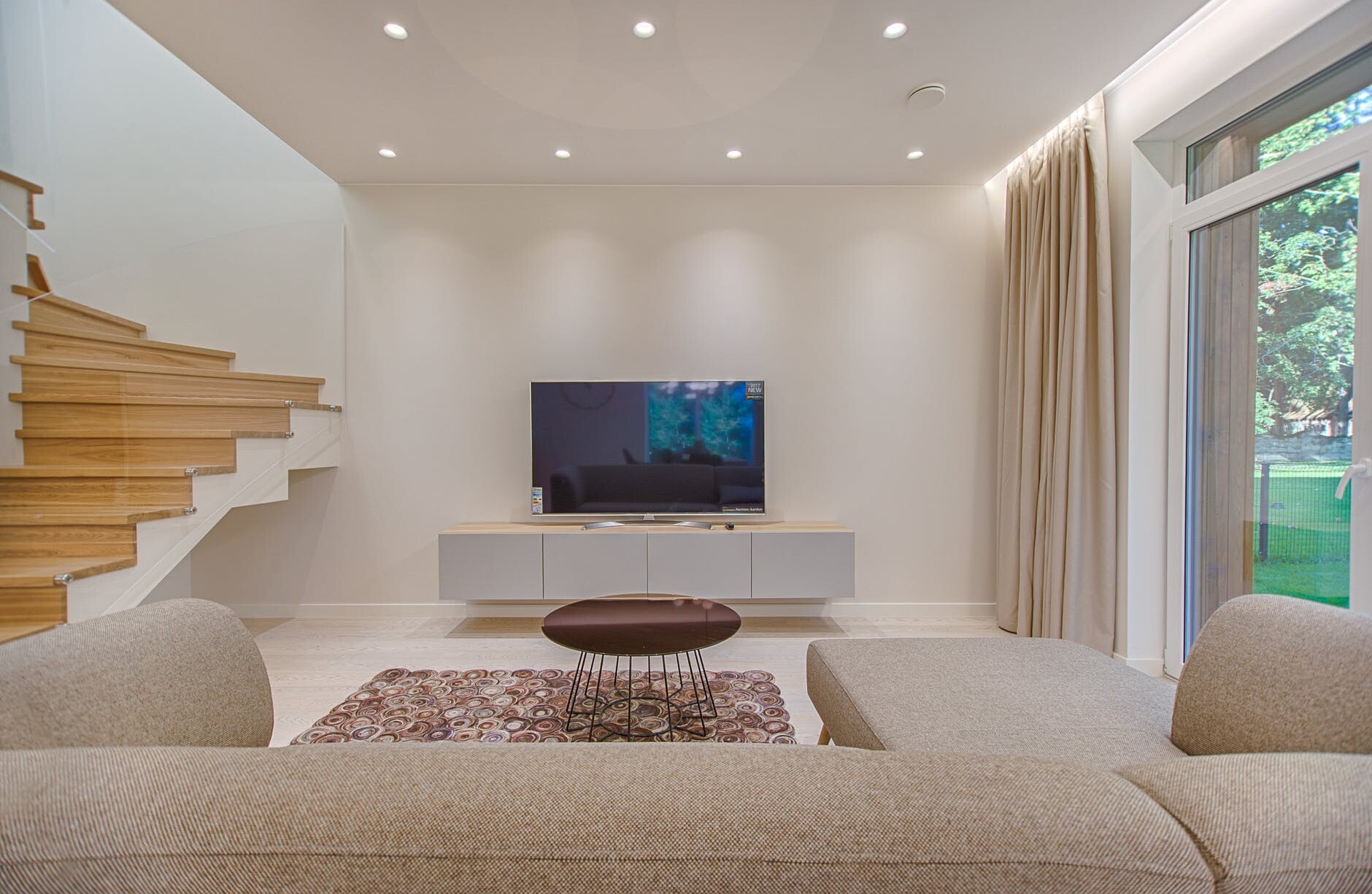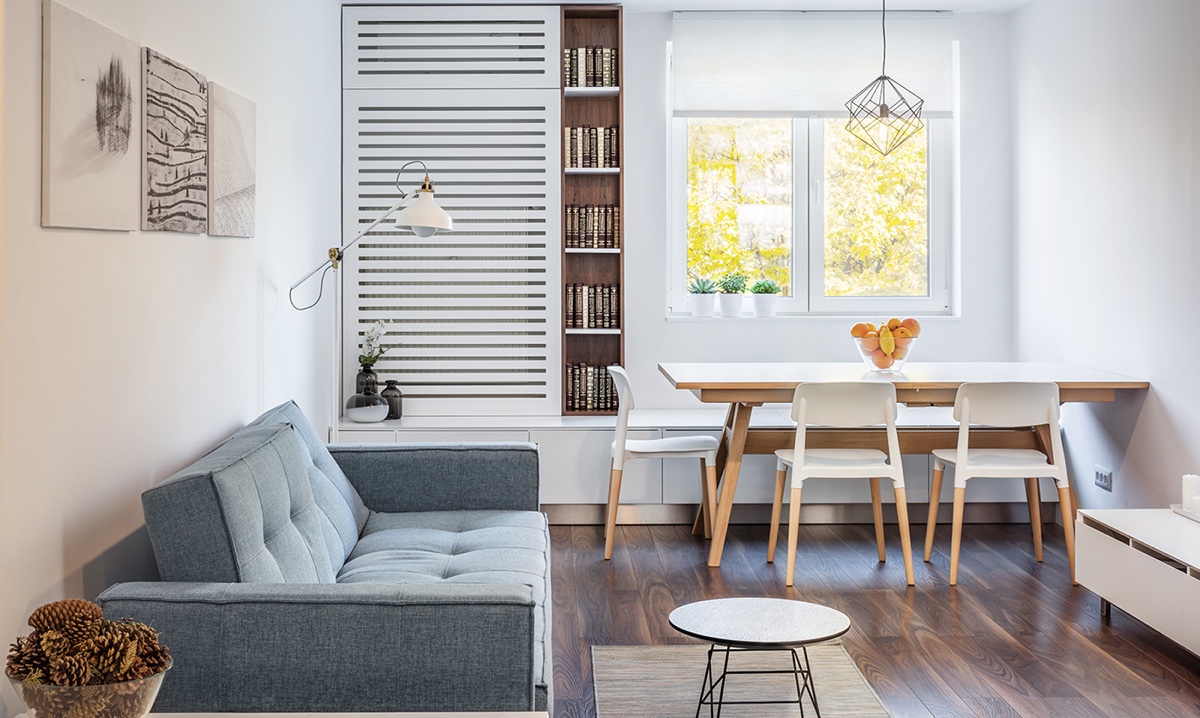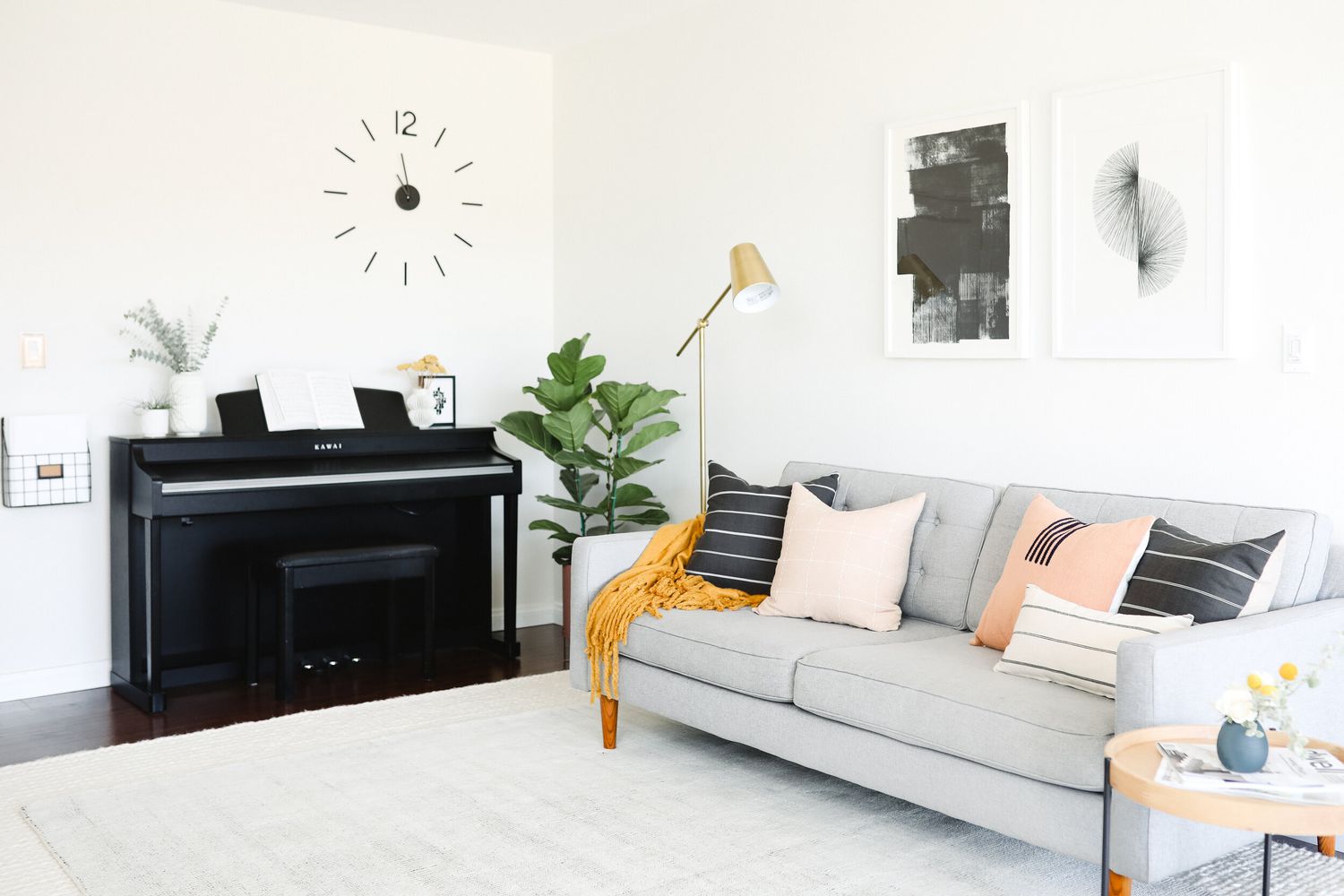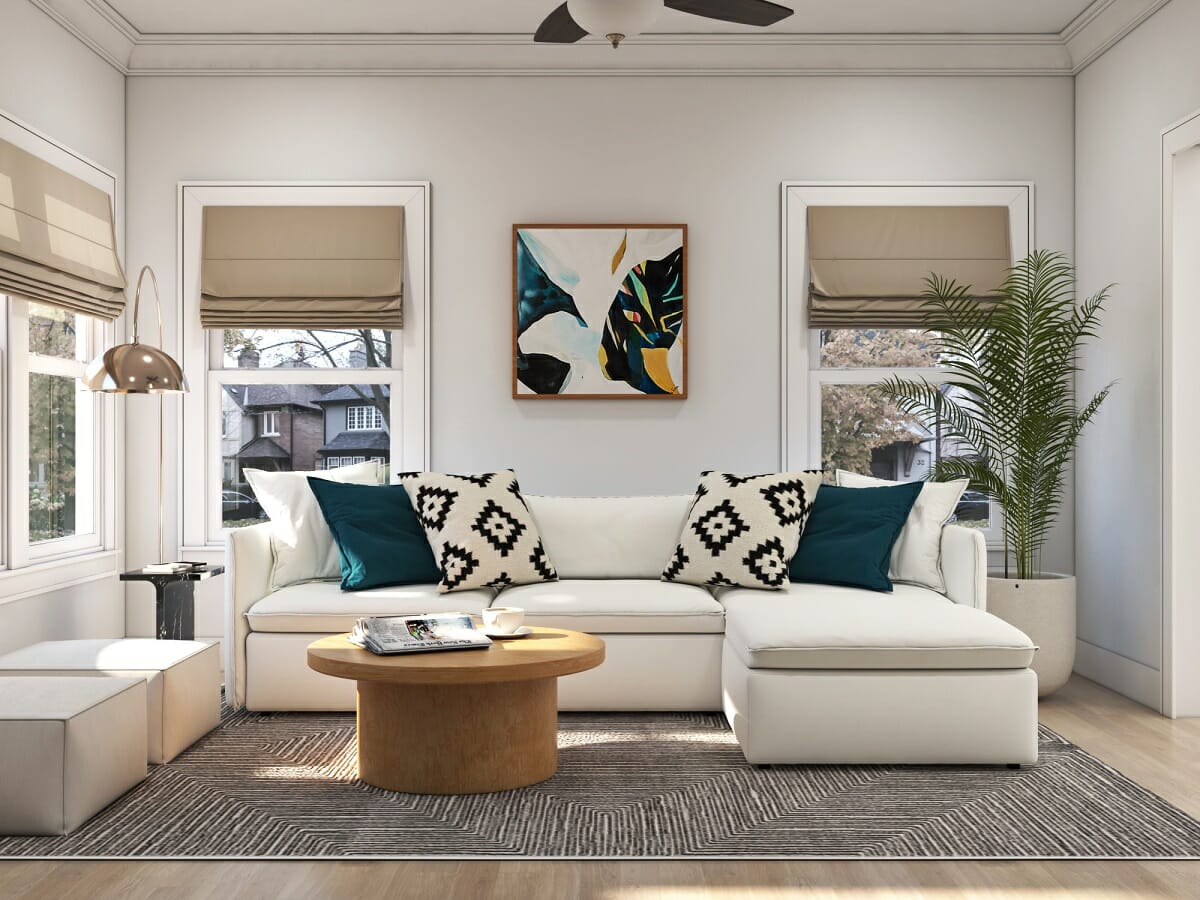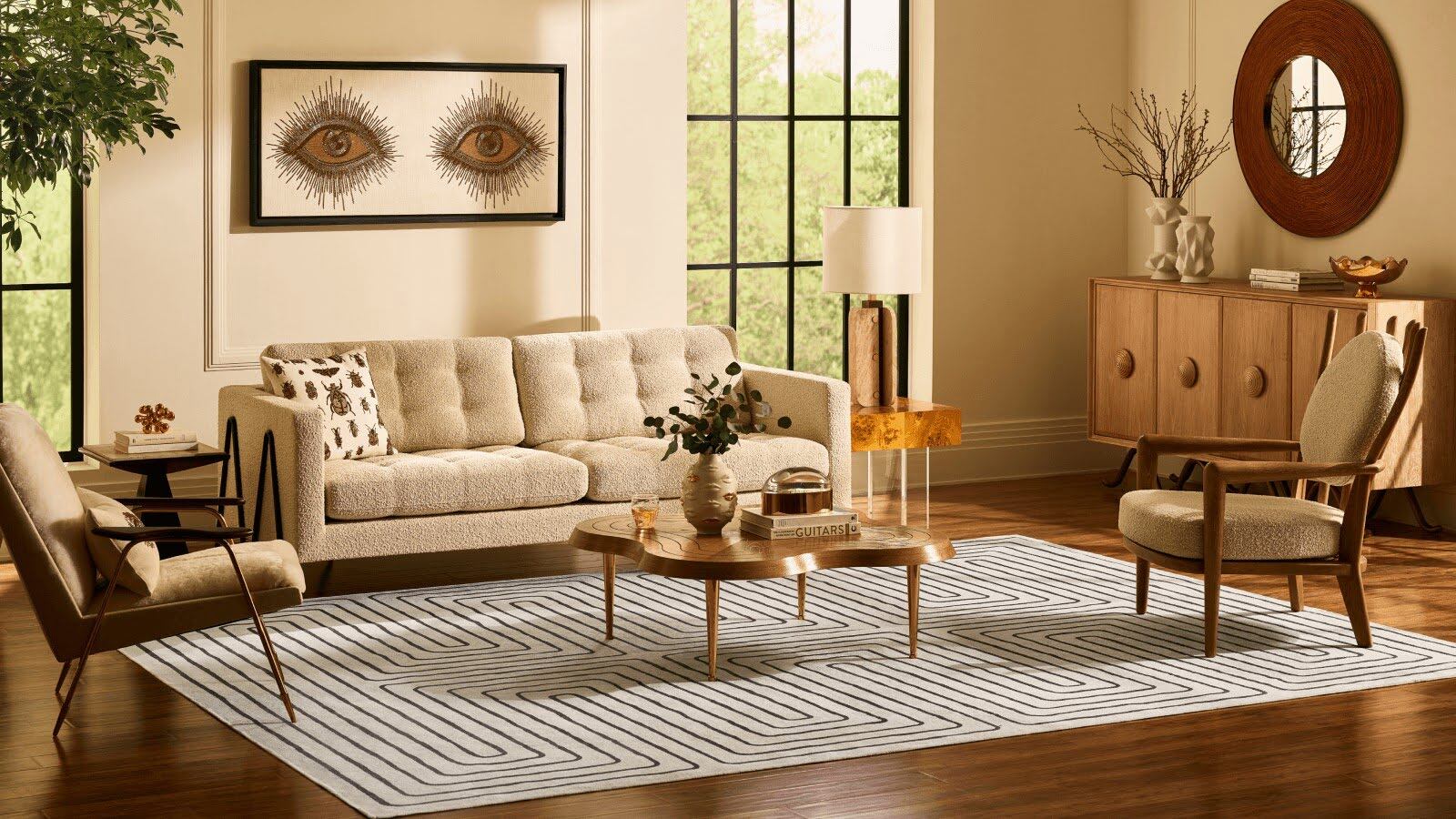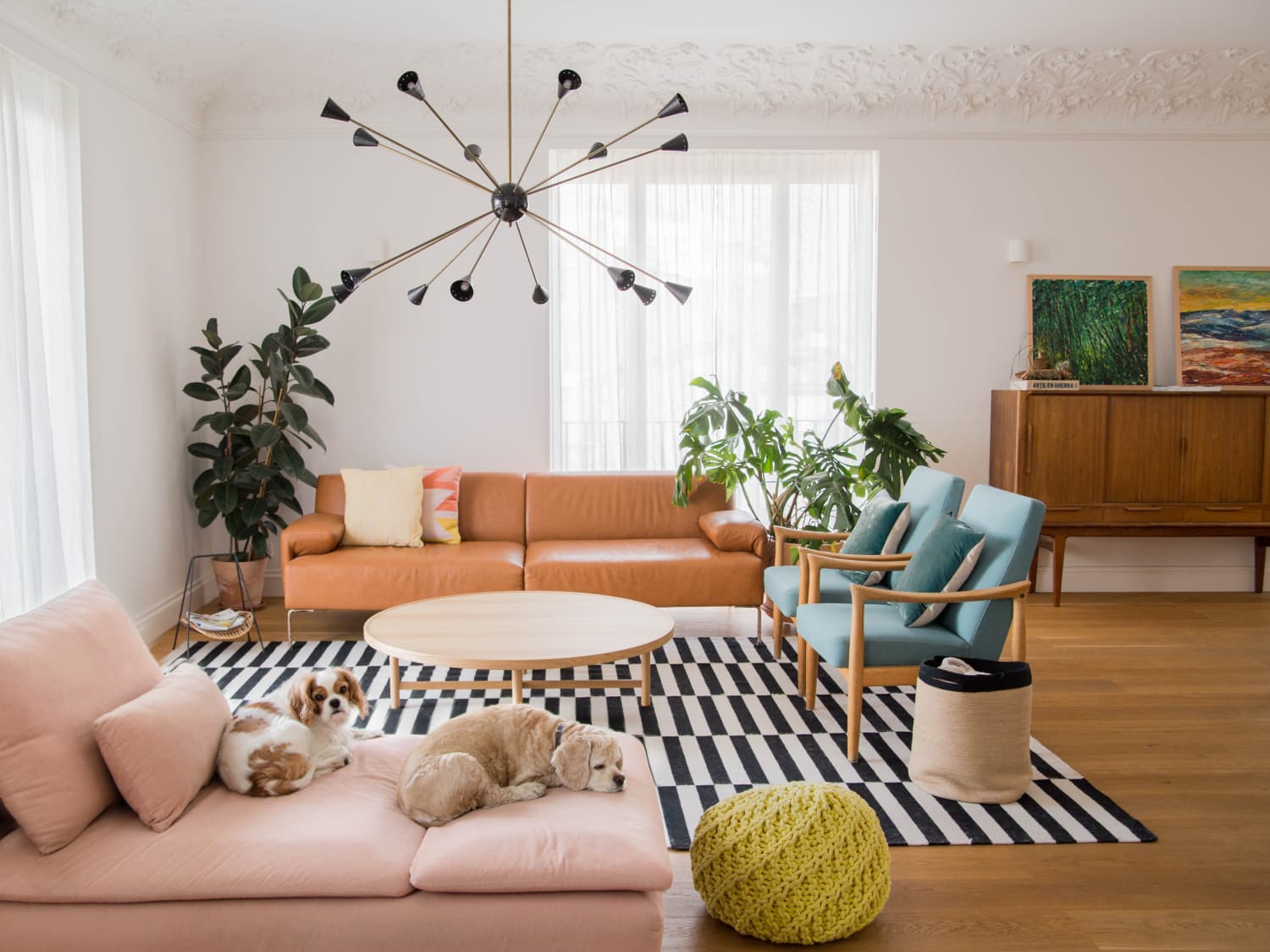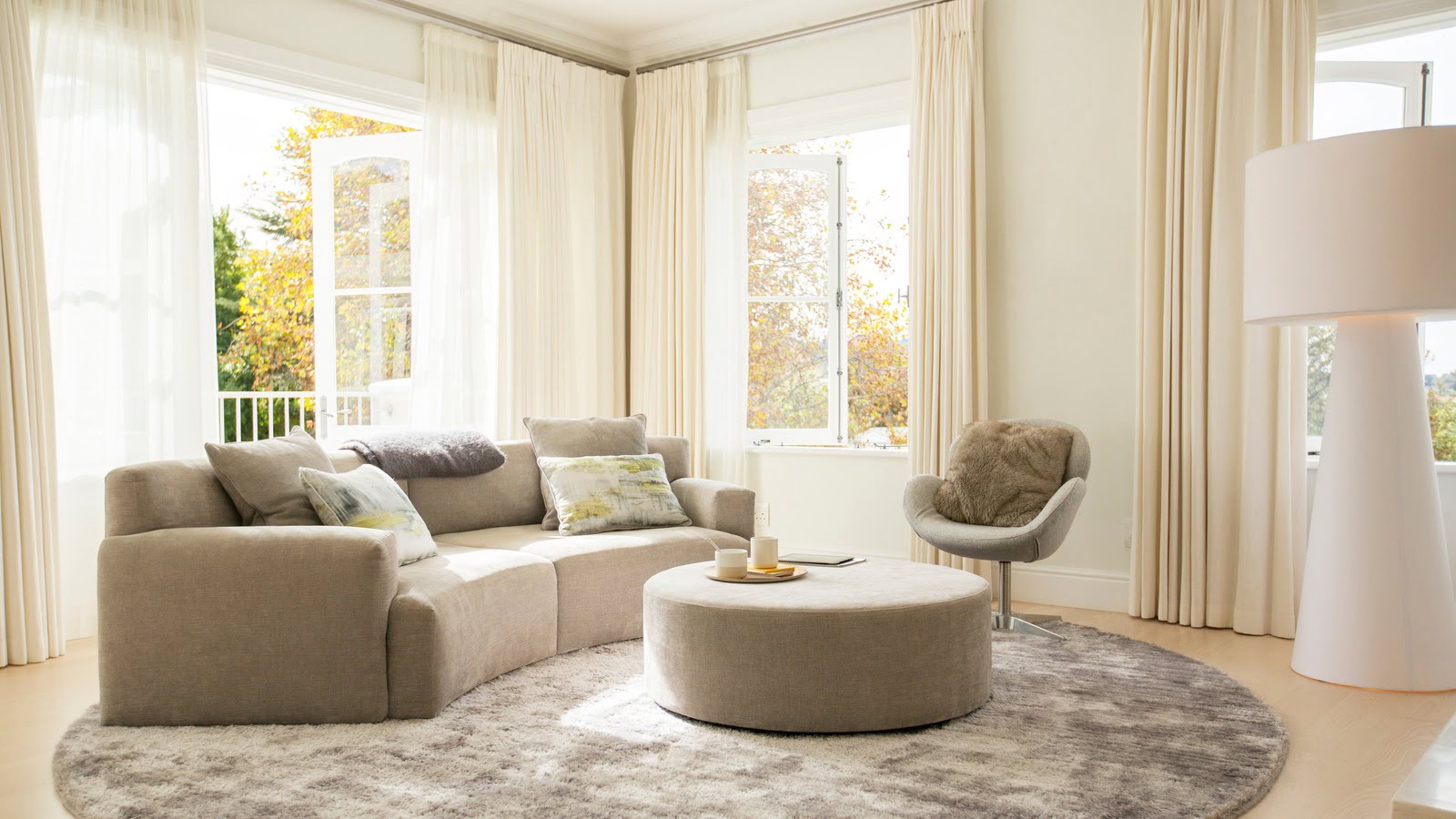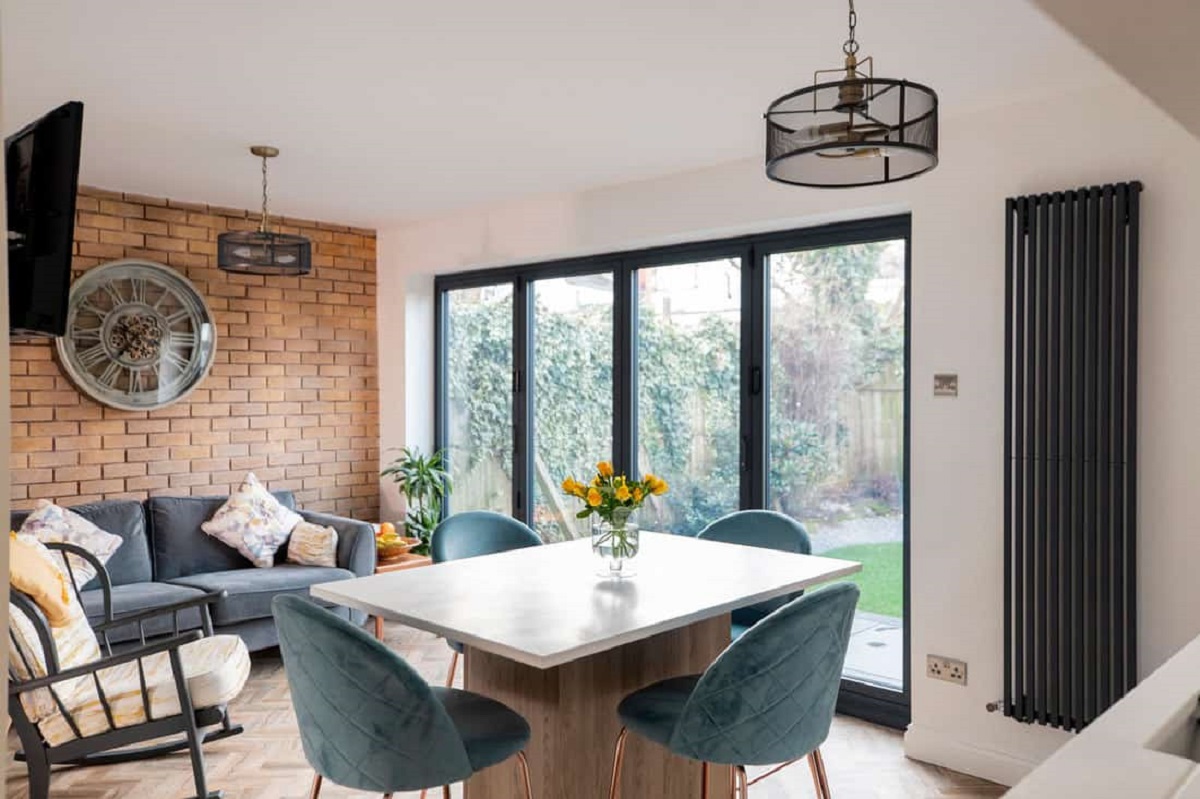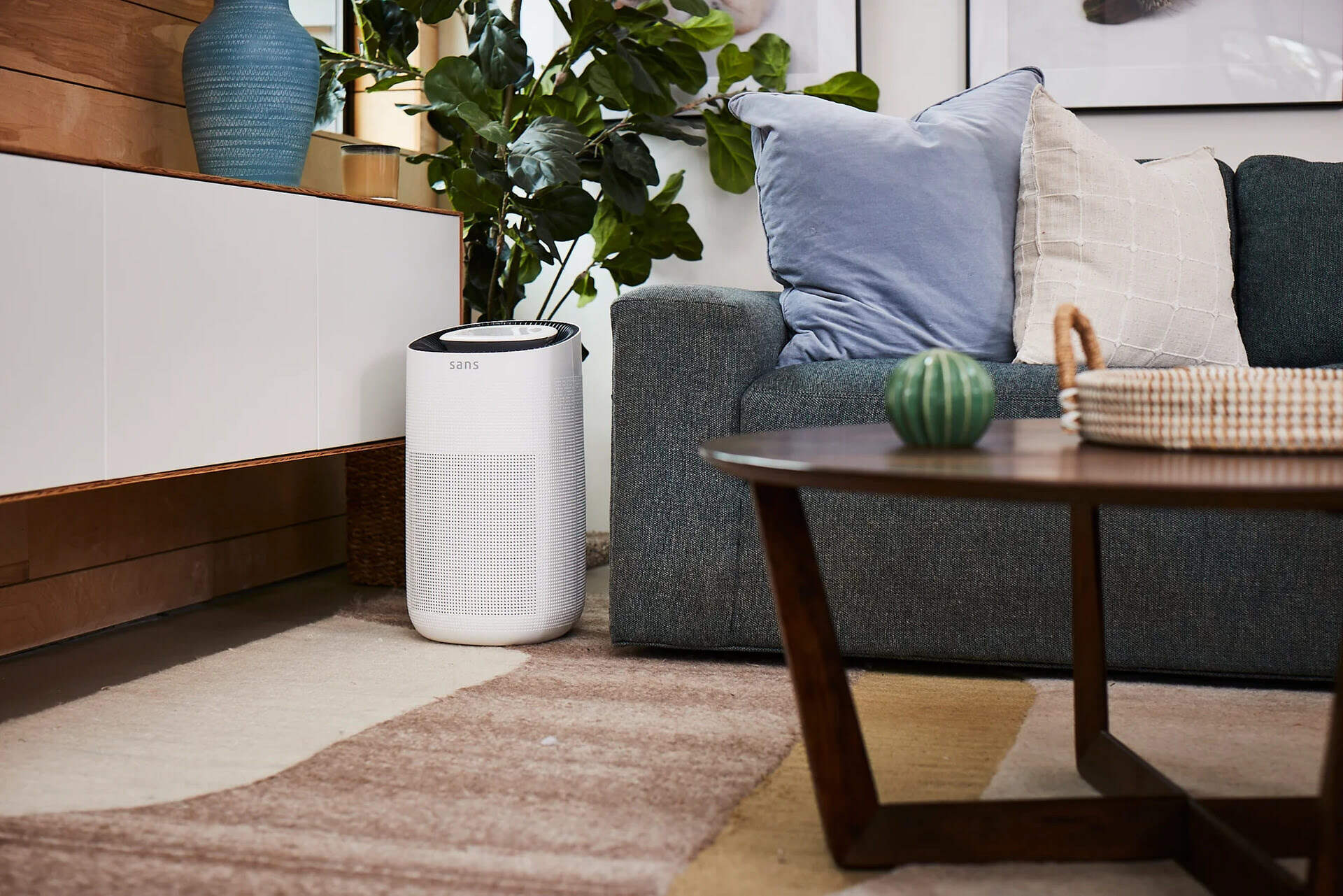

Articles
How To Place A Carpet In A Living Room
Modified: October 20, 2024
Learn how to properly place a carpet in your living room with our informative articles. Improve the aesthetics and comfort of your space with expert tips and advice.
(Many of the links in this article redirect to a specific reviewed product. Your purchase of these products through affiliate links helps to generate commission for Storables.com, at no extra cost. Learn more)
Introduction
Welcome to our comprehensive guide on how to place a carpet in a living room. A carpet can drastically transform the look and feel of your space, adding warmth, comfort, and style. Whether you are redecorating your existing living room or planning a complete overhaul, choosing and placing the right carpet is essential.
In this article, we will walk you through the step-by-step process of selecting the perfect carpet for your living room and guide you on how to measure, prepare, and lay the carpet. We will also discuss the trimming and finishing touches, as well as provide tips on cleaning and maintenance to keep your carpet looking its best for years to come.
So, if you’re ready to enhance the ambiance and cozy factor of your living room, let’s get started!
Key Takeaways:
- Choose a carpet that complements your living room’s style, color, and material, while prioritizing durability and maintenance to ensure long-lasting beauty and comfort.
- Accurately measure, prepare, and lay your living room carpet for a professional finish, then focus on trim and finishing touches to enhance its aesthetic appeal and longevity.
Read more: How To Place Plants In Living Room
Choosing the Right Carpet
When it comes to choosing the right carpet for your living room, various factors should be taken into consideration, including the style, color, material, and durability. Here are some essential tips to help you make an informed decision:
- Consider the Style: First, think about the overall style and aesthetic of your living room. Do you prefer a traditional, modern, or eclectic look? The carpet you choose should complement your existing furniture and décor. For a classic look, opt for a neutral-colored carpet with a traditional pattern. For a more contemporary feel, consider a solid-colored or geometric pattern carpet.
- Pick the Right Color: Color plays a significant role in creating the desired atmosphere in your living room. Lighter-colored carpets can make a room appear more spacious, while darker colors provide a cozy and intimate feel. Consider the existing color scheme and choose a carpet that complements or contrasts with it. Keep in mind that darker-colored carpets are more forgiving when it comes to hiding stains or wear and tear.
- Focus on Material: The material of the carpet determines its durability, texture, and maintenance requirements. Common carpet materials include nylon, polyester, wool, and blends. Nylon is known for its durability and stain resistance, while wool offers a luxurious and natural feel. Polyester is a budget-friendly option that is resistant to fading and stains. Consider your lifestyle and the amount of foot traffic in your living room when selecting the appropriate material.
- Assess Durability: A living room is a high-traffic area, so it is crucial to choose a carpet that can withstand heavy use. Look for carpets with a high density and twist level. Higher density means more fibers per square inch, offering better durability. Additionally, a higher twist level indicates stronger and more resilient carpet fibers.
- Consider Maintenance: Carpets require regular maintenance to keep them looking fresh and clean. Some materials and styles are more forgiving when it comes to stains and spills, while others require more frequent cleaning. If you have children or pets or anticipate frequent accidents, consider a carpet with stain-resistant properties or opt for a darker color that can better hide any mishaps.
By considering these factors, you can narrow down your options and choose a carpet that not only suits your personal style but also meets your practical needs.
Measuring the Living Room
Before purchasing a carpet for your living room, it is crucial to accurately measure the space to ensure you buy the right size. Here’s a step-by-step guide on how to measure your living room:
- Gather the Necessary Tools: To measure your living room, you will need a tape measure, a pen or pencil, and a piece of paper or a notebook to record the measurements.
- Clear the Area: Remove any furniture or obstacles from the room to have a clear and unobstructed space for measuring.
- Measure the Length: Starting at one end of the living room, use the tape measure to measure the length of the room along one wall. Extend the tape measure to the opposite wall and record the measurement in either feet or meters. Repeat this process for any additional rectangular or square-shaped areas in your living room.
- Measure the Width: Next, measure the width of the room by placing the tape measure against one side wall and extending it to the opposite side. Again, record the measurement.
- Factor in Irregular Shapes: If your living room has any irregular shapes, such as L-shapes or alcoves, measure each section individually and record their respective lengths and widths.
- Calculate the Square Footage: To determine the total square footage of your living room, multiply the length by the width of each individual section and sum up the results. This will give you the total square footage of carpet you will need to purchase.
- Consider Extra Carpet: It is advisable to purchase a slightly larger carpet than the exact measurements of your living room. This allows for any cutting or trimming that may be required during installation, as well as provides extra coverage for future adjustments or repairs.
By following these measurement guidelines, you can ensure that you purchase the right size carpet for your living room, avoiding any unnecessary headaches or returns.
Preparing the Floor
Before laying the carpet in your living room, it is essential to properly prepare the floor. This preparation ensures a smooth and even surface for the carpet installation and helps to prolong the lifespan of the carpet. Here are the steps to prepare the floor:
- Clean the Floor: Start by thoroughly cleaning the living room floor. Remove any dirt, dust, or debris using a broom or vacuum cleaner. Ensure that the surface is clean and free of any obstacles that may affect the installation process.
- Repair Any Damage: Check the floor for any damage such as cracks, holes, or uneven areas. Repair any visible issues to prevent them from affecting the installation or causing further damage to the carpet in the future.
- Smooth Out Uneven Surfaces: If there are any uneven areas on the floor, use a floor leveling compound or self-leveling underlayment to smooth them out. Follow the instructions provided by the manufacturer to ensure proper application and drying time.
- Install a Carpet Pad: Consider installing a carpet pad or underlayment before laying the carpet. A carpet pad provides extra cushioning, insulation, and support for the carpet. It helps to absorb impact and reduce noise, making your living room more comfortable and quiet. Follow the manufacturer’s instructions to properly install the carpet pad.
- Check for Moisture: Moisture can cause damage to the carpet and create an unhealthy environment. Test the living room floor for any signs of moisture or humidity. If necessary, address the moisture issue before proceeding with the carpet installation.
- Ensure Adequate Ventilation: Proper ventilation is crucial in maintaining the longevity of your carpet. Make sure the living room has sufficient ventilation to allow airflow and prevent the buildup of moisture, odors, or mold.
By taking the time to prepare the floor beforehand, you will create a stable and suitable surface for the carpet installation, ensuring a smooth, comfortable, and long-lasting result.
When placing a carpet in a living room, make sure it is large enough to fit under the front legs of the furniture to create a cohesive and grounded look. This will also help to define the seating area in the room.
Laying the Carpet
Now that you have chosen the right carpet and prepared the floor, it’s time to lay the carpet in your living room. Follow these step-by-step instructions for a successful carpet installation:
- Roll Out the Carpet: Start by unrolling the carpet in the room, allowing it to acclimate to the temperature and humidity of the space. Leave it in place for at least 24 hours to flatten out any wrinkles or creases.
- Measure and Cut: Measure the length and width of the living room, ensuring that the carpet is slightly larger than the dimensions. Use a carpet knife or sharp utility knife to cut the carpet to fit the size of the room. Allow for some excess carpet on all sides for trimming and adjustment purposes.
- Position the Carpet: Begin by positioning the carpet along one wall, making sure it is straight and aligned. Leave a small gap between the carpet and the wall (about 1/2 inch) to allow for any necessary adjustments and to fit the carpet into the tack strip later on.
- Secure the Carpet: Use a knee kicker or power stretcher to stretch the carpet tightly across the room. Start in the center and work your way towards the walls, making sure there are no wrinkles or loose areas. Trim any excess carpet using a carpet knife.
- Secure the Edges: Once the carpet is stretched and in place, use a carpet tucker or putty knife to push the edges of the carpet into the gap between the carpet and the wall. Be sure to tuck it firmly to ensure a neat and secure finish.
- Attach the Carpet to the Tack Strips: Along the edges of the room, there should be tack strips or wooden strips with small pointed tacks facing upward. Use a carpet stretcher or knee kicker to press the carpet onto the tack strips, ensuring it is securely attached. Be cautious not to press too hard and damage the carpet or hurt yourself.
- Trim Excess Carpet: Finally, trim any excess carpet along the walls using a sharp carpet knife. Cut along the edge of the wall, keeping the knife perpendicular and being careful not to damage the baseboards or surrounding surfaces.
Remember to work slowly and carefully throughout the installation process to ensure a professional-looking finish. You can also consider hiring a professional carpet installer if you are unsure or uncomfortable with any of the steps involved.
With the carpet in place, you can now enjoy the added comfort, warmth, and beauty it brings to your living room.
Read more: How To Place A Piano In A Living Room
Trim and Finishing Touches
Once the carpet is laid in your living room, it’s time to focus on the trim and finishing touches to achieve a polished and seamless look. Here are some essential steps to consider:
- Install Transition Strips: Transition strips are used to create a smooth transition between different types of flooring, such as carpet to tile or carpet to hardwood. Install the appropriate transition strips along the thresholds and doorways in your living room to create a seamless flow between the rooms.
- Trim the Excess Carpet: After the carpet is installed, there may be excess carpet along the baseboards or edges of the room. Use a sharp carpet knife or a trimmer tool to carefully trim the excess carpet, ensuring a clean and finished appearance. Be cautious not to cut into the baseboards or surrounding surfaces.
- Secure Loose Edges: Check for any loose or frayed edges of the carpet and use a strong adhesive or carpet tape to secure them in place. This will prevent any tripping hazards and maintain the overall neatness of the carpet.
- Install Carpet Grippers: If the carpet is prone to shifting, especially in high-traffic areas, consider installing carpet grippers around the perimeter of the room. Carpet grippers are strips with small teeth or tacks that hold the carpet in place and prevent it from slipping or bunching up.
- Consider Decorative Edging: To further enhance the aesthetic appeal of your living room carpet, you can opt for decorative edging or binding. This involves adding a fabric or trim around the edges of the carpet to create a finished and customized look. Consult with a professional or a carpet retailer to explore the different options available.
- Vacuum and Clean: Once the trim and finishing touches are complete, give your carpet a thorough vacuuming to remove any loose fibers or debris that may have accumulated during the installation process. Follow the manufacturer’s recommendations for cleaning and maintenance to keep your carpet looking its best.
By paying attention to these trim and finishing touches, you can ensure that your carpet installation is not only functional but also visually appealing, adding the perfect finishing touch to your living room decor.
Cleaning and Maintenance
Regular cleaning and maintenance are essential to keep your carpet looking fresh, clean, and in good condition. By following these tips, you can prolong the lifespan of your carpet and maintain its beauty:
- Vacuum Frequently: Regular vacuuming is one of the most important steps in carpet maintenance. Vacuum your living room carpet at least once a week, and more frequently in high-traffic areas. This helps to remove dirt, dust, and debris before they settle into the fibers and cause damage.
- Address Spills Immediately: Accidents happen, so it is crucial to address spills and stains as soon as they occur. Blot the spill with a clean towel or cloth to absorb as much liquid as possible. Avoid rubbing the stain, as it can spread or embed it deeper into the carpet. Use a mild carpet cleaner or a homemade solution to treat the stain, following the manufacturer’s instructions.
- Use Rugs and Mats: To protect your living room carpet from excess wear and tear, place rugs and mats in high-traffic areas, such as entryways or in front of frequently used furniture. These rugs and mats can help prevent dirt and debris from being tracked onto the carpet and provide an extra layer of protection.
- Rotate Furniture: Heavy furniture can leave permanent indentations on the carpet if left in the same spot for extended periods. To prevent this, periodically rotate or move your furniture to distribute the weight and minimize indents. Use furniture coasters or pads underneath the legs to further protect the carpet.
- Deep Clean Annually: In addition to regular vacuuming, it is beneficial to deep clean your living room carpet at least once a year. This thorough cleaning removes deep-seated dirt, allergens, and stains that may not be eliminated with regular vacuuming alone. You can rent a carpet cleaning machine or hire a professional carpet cleaning service to ensure a deep and effective clean.
- Be Cautious with Chemicals: When using carpet cleaning products, carefully read and follow the instructions provided. Some chemicals can be harsh and may damage or discolor the carpet fibers if not used correctly. Test any new cleaning product in an inconspicuous area of the carpet before applying it to the entire carpet.
- Protect from Sunlight: Prolonged exposure to direct sunlight can cause fading and discoloration of your carpet. Use window coverings or UV-protective films to shield your living room carpet from harmful UV rays. Rearrange furniture periodically to avoid uneven fading.
By following these cleaning and maintenance practices, you can extend the life of your living room carpet, keep it looking fresh and vibrant, and create a healthier environment in your home.
Conclusion
Placing a carpet in your living room can transform the space, providing comfort, style, and a cozy atmosphere. By following the steps outlined in this comprehensive guide, you can choose the right carpet, measure your living room accurately, prepare the floor, lay the carpet, and add the finishing touches.
During the selection process, consider the style, color, material, and durability of the carpet to best suit your preferences and lifestyle. Accurately measuring the living room ensures that you purchase the correct size and have ample carpet for installation. Properly preparing the floor by cleaning, repairing, and leveling ensures a smooth surface for the carpet to be laid.
When laying the carpet, take care to stretch it tightly and secure it to the tack strips, while also trimming the edges for a clean finish. Pay attention to the trim and finishing touches, such as installing transition strips, trimming excess carpet, and securing loose edges. Finally, establishing a cleaning and maintenance routine, including regular vacuuming, prompt stain removal, and annual deep cleaning, will help keep your living room carpet looking its best for years to come.
Remember, a well-placed and well-maintained carpet can enhance the aesthetic appeal of your living room and create a comfortable and inviting space for you, your family, and your guests to enjoy.
So, go ahead and embark on your carpet-placing adventure. With these guidelines in mind, you’ll be able to navigate the process with ease and confidence, resulting in a stunning living room that reflects your personal style and provides a cozy haven in your home.
Frequently Asked Questions about How To Place A Carpet In A Living Room
Was this page helpful?
At Storables.com, we guarantee accurate and reliable information. Our content, validated by Expert Board Contributors, is crafted following stringent Editorial Policies. We're committed to providing you with well-researched, expert-backed insights for all your informational needs.
